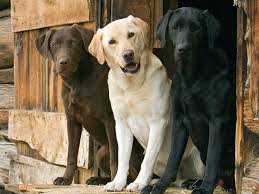This story was everywhere – but then dogs are very popular as human companions, as working dogs (retrieving dead animals, rooting out rabbits in holes, rounding up sheep, and sniffing out drugs etc) and as warning sentries (barking like mad when a stranger approaches, very handy if you live in an isolated hill farm). We take them for granted but how did they evolve into so many different breeds and cross breeds. Where did the original domestic dog come from – a jackal, a wolf, or some lost relative. Many theories have been published and there is another at http://phys.org/print369477321.html … and www.telegraph.co.uk/news/science/science-news/12052798/dog-has-been-mans…
 The origin of the dog depends on who is doing the research, it would seem – and genetics hasn't altered the competition too much. Dogs are said to have split off from wolves in Europe, western Asia, central Asia, Africa and India but a Swedish geneticist is now saying that they emerged in SE Asia. The genome of 46 dogs and 12 wolves was sampled, with a variety of results but the result was he found that dogs had probably split apart 33,000 years ago – and the global spread of domesticated dogs came after 18,000 years ago. The latter seems to go hand in hand with the spread and proliferation of humans after the end of the Late Glacial Maximum, so that is not a surprise. When we look outside the study at the 33,000 year starting point we find that it conforms to a possible bottleneck situation – oh the wonder of genetics. How reliable is it really. The bottleneck was caused by a catastrophic event or events dating between 40,000 and 30,000 years ago. This was a major event that witnessed mass die-offs of mammal species around the world from Australia to Eurasia and the Americas (everywhere in fact). It is also the boundary marker between Neanderthals and modern humans, and we may wonder if a bottleneck was involved there. A supernovae event has been proposed by Firestone et al and by La Violette too but these are just conjecture. The fact that it corresponds with a bottleneck in the genome of the dog is interesting and may reveal the idea of a catastrophic event at that time is a reality (by whatever cause may eventually be decided).
The origin of the dog depends on who is doing the research, it would seem – and genetics hasn't altered the competition too much. Dogs are said to have split off from wolves in Europe, western Asia, central Asia, Africa and India but a Swedish geneticist is now saying that they emerged in SE Asia. The genome of 46 dogs and 12 wolves was sampled, with a variety of results but the result was he found that dogs had probably split apart 33,000 years ago – and the global spread of domesticated dogs came after 18,000 years ago. The latter seems to go hand in hand with the spread and proliferation of humans after the end of the Late Glacial Maximum, so that is not a surprise. When we look outside the study at the 33,000 year starting point we find that it conforms to a possible bottleneck situation – oh the wonder of genetics. How reliable is it really. The bottleneck was caused by a catastrophic event or events dating between 40,000 and 30,000 years ago. This was a major event that witnessed mass die-offs of mammal species around the world from Australia to Eurasia and the Americas (everywhere in fact). It is also the boundary marker between Neanderthals and modern humans, and we may wonder if a bottleneck was involved there. A supernovae event has been proposed by Firestone et al and by La Violette too but these are just conjecture. The fact that it corresponds with a bottleneck in the genome of the dog is interesting and may reveal the idea of a catastrophic event at that time is a reality (by whatever cause may eventually be decided).
The geneticist, Peter Savolainen, suggested wolves became divided 33,000 years ago. The wolf of southern China and SE Asia developed into dogs. Thereafter, the spread of dogs around the world came after domestication. How they spread is another matter altogether that he has not researched a great deal. He has no idea. In spite of that the findings are interesting if genetic research has simply found a bottleneck as dogs may well go back long before 33,000 years ago (and that would be something else and may propagate another batch of research papers). See also http://anthropology.net/2015/12/18/ancient-dna-indicates-domesticated-do… … which tells us there were 12 wolves in the study, 27 dogs indigenous to Asia and Africa and a collection of 19 breeds from around the world – 58 dna samples. These show that dogs from SE Asia display the highest genetic diversity and at the same time are genetically the closest to wolves.
